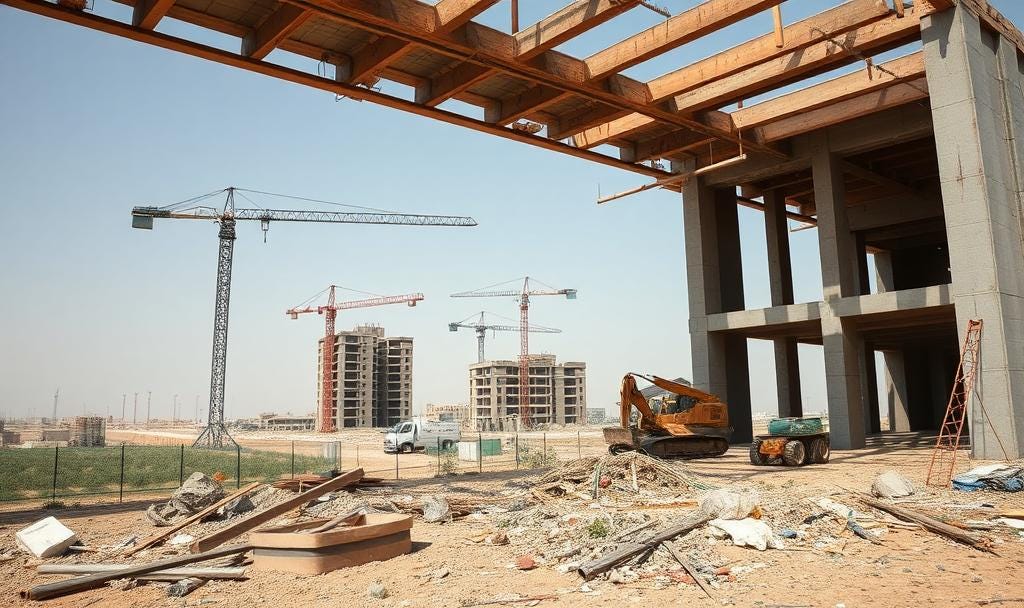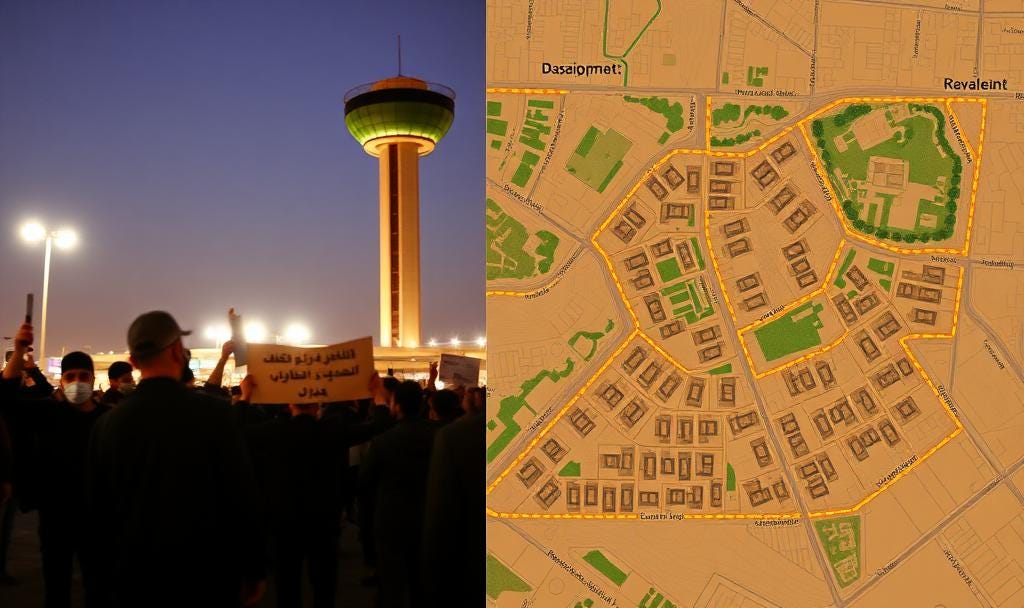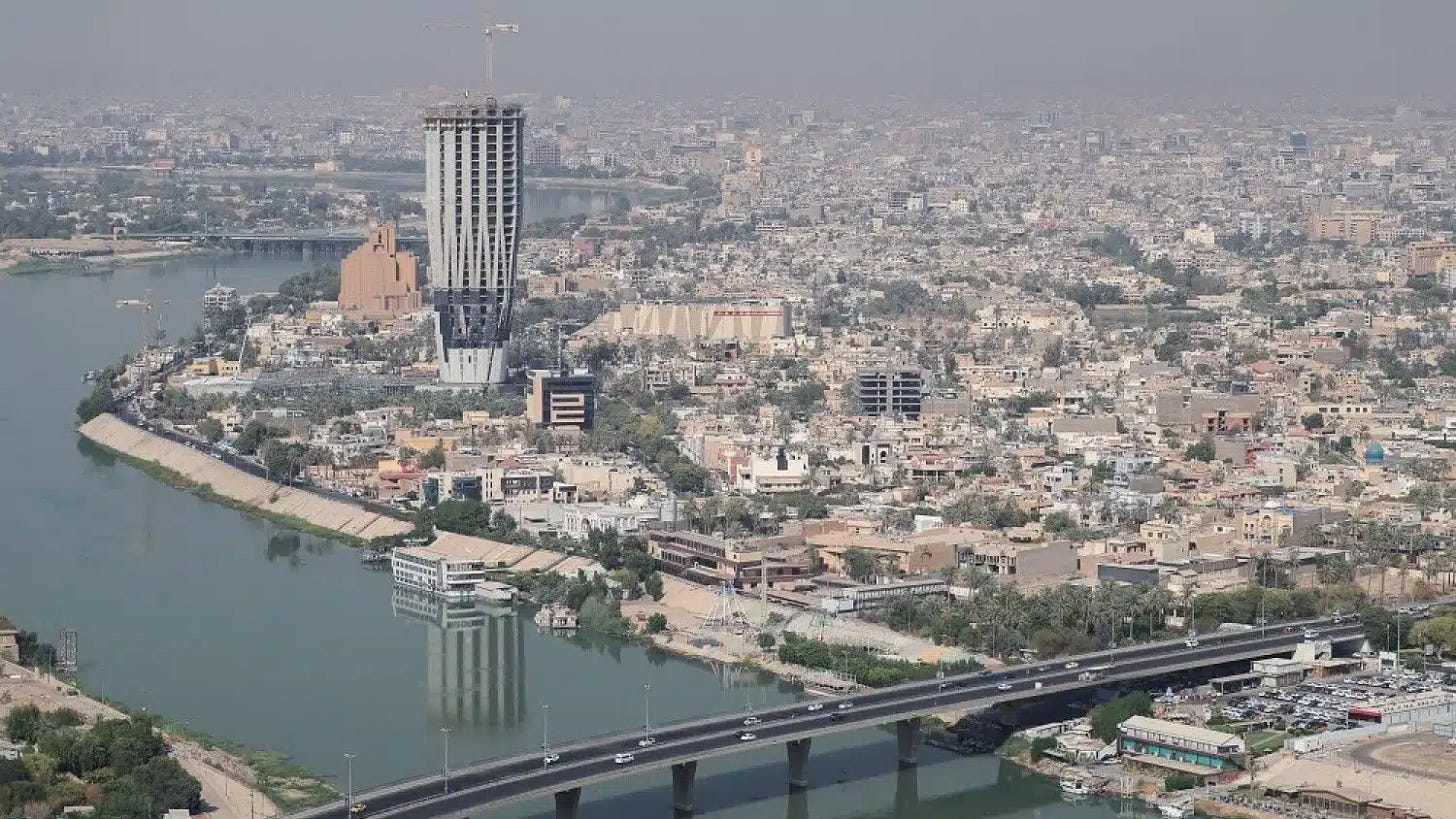Baghdad’s New Administrative Capital: A Modernization Milestone or a Renewed Political Crisis?
The proposed New Administrative Capital project in Baghdad is presented as an ambitious urban initiative aimed at modernizing infrastructure and reshaping the city's urban landscape. By allocating integrated spaces for each ministry within a modern infrastructure framework, the project promises a fresh start for Iraq’s capital. However, serious questions surround the endeavor—ranging from land ownership and economic feasibility to political and social challenges, along with fears that its motivations may be sectarian, potentially aiming to alter the region's demographic makeup.
A Bold Urban Vision
The Iraqi government is moving forward with the administrative capital project as part of a broader vision to revamp the urban environment and expand development across the country.
The Ministry of Construction, Housing, and Municipalities announced that four Egyptian companies have submitted proposals to develop the new administrative capital in Nahrawan, Baghdad—signaling a clear governmental shift toward introducing a new urban model in Iraq.
Engineer Hamed Abdul Hamed, head of the New Cities Authority at the ministry, told the official Al-Sabah newspaper on February 5 that the Egyptian firms have substantial experience in building new cities and administrative capitals, both in Iraq and Egypt.
He added that the ministry is still reviewing the proposals and holding meetings with company representatives to select the most suitable bid. The project requires meticulous planning to designate ministry sites and ensure a smooth transition of government operations.
The plan allocates 50 dunams (approximately 12.35 acres) for each ministry and envisions a modern infrastructure with highways and advanced transportation systems.
Egypt hopes to replicate its success in building a new capital outside Cairo—a project executed through a blend of local and international firms.
While Egypt’s expertise could significantly bolster Baghdad’s project, its success hinges on overcoming Iraq’s administrative, political, and financial hurdles and ensuring a clear vision, avoiding the pitfalls that may prevent full replication of the Egyptian model.
Unresolved Questions and Lingering Concerns
Despite the grand ambitions of this multi-billion-dollar endeavor, key unresolved issues cast doubt on its priorities and feasibility in light of Iraq’s ongoing economic and social challenges.
Even with the value of Egyptian experience, serious questions remain about whether that model aligns with Iraq’s unique landscape of socio-economic struggles.
Though the project appears feasible on paper, its greatest challenge lies in whether it can genuinely serve the public, not just government institutions—especially given the urgent need to improve the quality of life in existing neighborhoods across Baghdad.
Engineer Hamed noted that the initiative is part of a broader governmental agenda to establish 52 future cities across Iraq. While this vision is expansive, it raises concerns about financing mechanisms, project sustainability, and the government’s capacity to balance new development with the rehabilitation of existing urban centers.
There is no doubt the project marks a bold step toward redrawing Iraq’s urban map. Yet, its success will depend on how well it addresses the real challenges citizens face and whether it fits within a comprehensive vision for sustainable development—or merely becomes a symbolic project that adds further strain on the nation.
Obstacles to Ambition
The long-stalled capital project faces a range of challenges threatening its realization, from inadequate infrastructure and financial hurdles to political and security complexities that may destabilize its implementation.
Political and security analyst Raad Hashim highlights disputes over the site location as a major issue, noting a lack of clarity in the project's preliminary planning.
The continued ambiguity over land designation raises legal and administrative complications, with fears of ownership disputes lingering due to longstanding land conflicts dating back to 2003—many of which are fueled by tribal and political entanglements.
Although the project is seen as a significant urban leap, the ongoing location controversy threatens to derail its progress. A lack of transparency in land allocation could seriously hamper execution.
Politically, the project lacks consensus. The proposed location has sparked sectarian and political tensions, with Hashim questioning why the project was announced without prior political agreement, especially given the multi-billion-dollar contracts at stake, which inevitably attract political interest.
Observers also warn that the project’s timing—just ahead of elections—suggests it may be politically motivated, used to rally party support in exchange for future benefits.
From a practical standpoint, Baghdad’s congestion may warrant a new capital. Yet, the proposed site’s distance could pose difficulties for vulnerable populations such as the elderly, given the country's inadequate public transportation system.
Government institutions stand to benefit most from the project, which would streamline inter-ministerial coordination. But whether the average Iraqi citizen will see tangible benefits remains uncertain.

Despite Egypt’s proven capacity in similar ventures, Hashim argues the real challenge lies within Iraq itself—bureaucracy and endemic corruption continue to hinder development. Success depends not only on the competence of the executing firms but also on the government’s ability to provide a transparent, corruption-free environment.
Financially, the project faces daunting challenges. As the current government nears the end of its term, securing necessary funding is uncertain. Many fear the project could meet the fate of past ventures that stalled due to administrative changes and inconsistent support. Delays could also trigger legal disputes with contractors, threatening its continuity.
Hashim concludes that the project still lacks a holistic vision to guarantee its success beyond Iraq’s political and economic instability. Without genuine political consensus and a clear economic strategy, this grand initiative risks becoming another burden compounding the country’s crises.
A Resurging Controversy
A prior attempt to launch a similar capital project near Baghdad Airport in 2021 ignited political and public outrage. Critics accused the government of using the venture as a smokescreen for corrupt land deals that undermined national interests.
The initiative, which aimed to allocate 106,000 dunams for investment, faced backlash from political blocs and affected residents, many of whom hold official deeds dating back decades.
At the time, the Iraqi Decision Alliance and Azm Coalition declared the project a threat to private property and demographic stability, warning of potential forced displacement and population changes. They called on parliament and the judiciary to intervene.
Parliament Speaker Mahmoud al-Mashhadani warned that the 2021 project—named Al-Rafeel City—could heighten Sunni community fears, urging the prime minister to avoid actions that might stir political and societal discord.
Mashhadani questioned the logic of building a new city at the expense of existing communities, saying the project was incomplete and lacked proper legal and planning criteria.
Opponents fear the project is part of a larger plan to engineer demographic changes around Baghdad, particularly in light of past disputes over land rights and displacement in areas like Jurf al-Sakhar and Tarmiyah.
Political analyst Abdulqader al-Nayel argues the project is not truly aimed at urban progress but rather serves as a political tool to alter the demographics of Baghdad’s Sunni Arab belt.
In an interview with Noon Post, Nayel claimed that since the US invasion, a regional-backed agenda has sought to forcibly remove Sunni Arabs from Baghdad—first through assassinations and arrests, then through projects masked as urban development.
He also voiced fears that sectarian motives could lead to the resettlement of non-Baghdadi Iraqis—or even foreign nationals—in strategic areas. He pointed to the alleged naturalization of thousands of Pakistanis, Afghans, and Iranians as evidence.
These concerns, he asserted, are grounded in reality, citing numerous depopulated Sunni-majority cities like Jurf al-Sakhar, Aziz Balad, Yathrib, and others across Diyala and Anbar.

To prevent demographic manipulation, Nayel suggested that such projects prioritize housing for local residents and involve regional and international architectural firms in a transparent process. He stressed the importance of preserving green and agricultural lands around Baghdad.
He further called for legislation restricting residency in Baghdad to its original inhabitants, citing the strain caused by internal migration from villages and marshlands.
Separately, Suha Dawood Najar, head of the National Investment Commission, acknowledged in a TV interview that legal loopholes in the investment law allow land to be sold at extremely low prices—fueling suspicions of corruption.
While Iraq urgently needs major development initiatives, the real challenge is to balance growth with the protection of residents' rights—a test that will ultimately determine the project’s fate.
A Necessary Step Forward?
Some observers, however, argue that Baghdad's New Administrative Capital is a much-needed solution to the city's chaotic urban sprawl.
Political analyst Ali al-Baydar told Noon Post the project could help reshape Iraq’s international image by presenting a more modern and organized capital.
He emphasized that the project's success depends on strict oversight, engaging reputable construction firms with strong global track records, and ensuring transparency and quality standards.
Al-Baydar also highlighted the importance of security around construction zones to prevent political or criminal interference, and the need for clear communication with the public regarding every step of implementation.
He believes that Iraq can draw on successful examples from countries like Egypt and Turkey—not only through partnerships with their firms but also by leveraging local expertise to monitor progress.
As for fears of demographic engineering, al-Baydar dismissed them as misplaced, arguing that such shifts are driven by political and military power, not urban development projects. On the contrary, he said, the project could increase property values and stimulate economic activity in the targeted areas.



